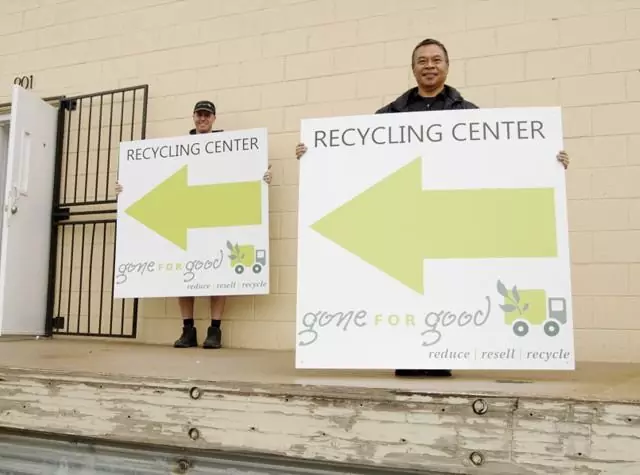
Waste Recycling Services
We take that extra step to keep stuff out of the landfill
Do you have unused or unwanted items that you need to get rid of, but you aren’t sure what to do with them? There is a good chance that many of them could actually be reused by someone else or recycled. Common household items that can (and should) be recycled include:
- Glass
- Aluminum
- Batteries-dry cell, lithium-ion, lithium metal, lead acid and other types of rechargeable batteries
- Electronics - TV’s, computers, cell phones
- Food- Compost uncooked, organic waste like fruit and vegetable scraps, eggshells and coffee grounds
- Lawn Waste- Compost dead leaves, grass clippings, sticks, plants
- Metal
- Old Clothes and Shoes
- Furniture
Non-recyclable items commonly mistaken as recyclable
- Diapers
- Coated cardboard boxes, such as juice boxes
- Napkins and Paper Towels
- Pizza boxes
- Plastic bags or plastic wrap
- Plastic screw on tops*
- Shredded paper
- Styrofoam
- Paper that is wet or has been wet
- Yogurt cups
- Wire clothes hangers
- Take out containers
These items cannot be recycled with regular household recycling services and should not be thrown out with your trash.
Household Hazardous Waste
- Paint
- Light bulbs
- Batteries
- Unemptied aerosol cans
- Ammunition
- Ammonia
- Antifreeze
- Nail polish
- Medical waste (equipment and supplies)
- Tires
- Chemicals
For disposal of household hazardous waste, check the Colorado Department of Public Health and Environment’s website for drop off locations and hours by county.
Gone For Good has established relationships with many local recycling companies in the Denver area for recycling anything from mattresses, to electronics, metal, and medical equipment, to wood, concrete, and old furniture. You’ll find the information for our recycling partners below. If you have items that can be recycled and you have the time to take it in, we highly recommend these businesses.
If you don’t have the time or a way to haul off the items, Gone For Good is here to help! You can give us a call or fill out the form on this page and let us know what you need done. We will schedule a pick up at your convenience and take care of it for you.
Reduce your carbon footprint by getting rid of your old, unwanted items responsibly. With Gone For Good, you can breathe easy knowing that we reuse or recycle as much as possible, significantly reducing the amount of trash that ends up in the landfill.
Gone For Good’s Preferred Partners For Recycling
|
Partner |
Contact |
Items Taken |
|
Eye Glasses |
||
|
(303) 792-0729 |
Medical equipment |
|
|
(303) 825-7166 |
Metal |
|
|
Cell phones |
||
|
Home batteries, Styrofoam, clothing |
||
|
(855) 302-2583 |
Electronics, small household appliances |
|
|
(970) 797-2934 |
TV’s, Computers, Electronics |
|
|
(303) 762-1160 |
Concrete, wood fencing, tree branches |
|
|
(720) 248-8772 |
Furniture |
|
|
Paint and Stain |
||
(866) 924-0458 |
Asbestos |
|
|
(720) 278-7725 |
Working computers and laptops |
|
|
(720) 515-1328 |
Mattresses and Box springs |
|
|
(970) 232-9108 |
Large amounts of clothing |
|
|
(303) 761-2681 |
Appliances, vehicles, household scrap metal |
|
|
(303) 444-6634 |
Multi solution recycling resource in Boulder County |
|
|
|
Donating, selling, disposing of, or recycling medical equipment and supplies |
Check out these businesses Gone For Good partners with in the Denver area

Mattresses – Springback Colorado
Shoes – Soles For Souls
Basic Recycling (cardboard, paper, magazines, plastic) – Denver Recycling
Basic Recycling (cardboard, paper, magazines, plastic) –Alpine Waste
When it is just trash and you need a roll off we recommend 5280 Waste Solutions
Metal Recycling – Western Metal - wmrecycling.com
